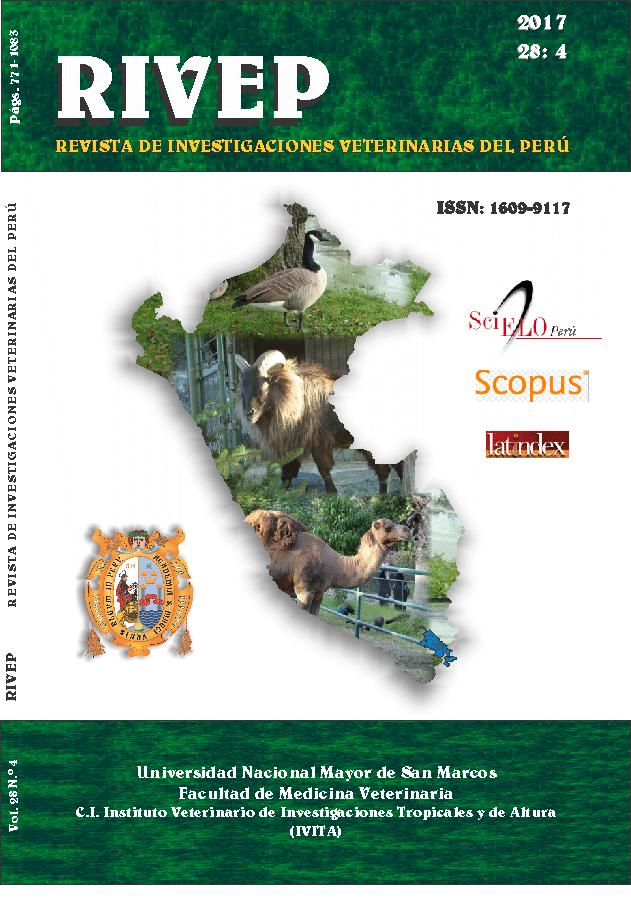Capacity of two cell lines for the production of cloned embryos by nuclear somatic c ell transfer
DOI:
https://doi.org/10.15381/rivep.v28i4.13878Keywords:
assisted reproductive technology, bovine, cloning, somatic cell nuclear transfer, handmade cloningAbstract
This study demonstrates the use of nuclear somatic cell transfer to produce the first cloned cattle in Peru. Skin fibroblasts and cumulus cells from adult donors were obtained for use as carioplasts; likewise, oocytes obtained from ovaries in the slaughterhouse were matured in vitro for 24 h. The mature oocytes were incubated 2 h in demecolcin (2.5 μg/ml) to promote cone formation with the metaphase plate and to guide manual enucleation. The zona pellucida in pronase (2 mg/ml) was removed for 3 min. The enucleation was manual with a microblade dividing the ova into two halves, where the nucleus-lacking halves were fused by the «sandwich» method (cytoplast–fibroblast– cytoplast). The reconstructed structures were chemically activated by incubation for 5 min in 7% absolute ethanol, followed by 5 h of cytochalacin B (5 μg/ml) and cycloheximide (10 μg/ml). The structures were cultured for 7 d until the blastocyst incubation/hatching phase. Seven blastocysts were transferred to six synchronized recipient cows seven days after ovulation. The permanence of four and three embryonic vesicles was achieved until days 28 and 60, respectively. Two calves were born from embryos reconstructed with skin cells and cumulus cells. By the genotype analysis using 15 markers (SSR) for cattle, it was confirmed that cloned calves were derived from donor cell lines.Downloads
Downloads
Published
Issue
Section
License
Copyright (c) 2017 Jenin Cortez, Nilton Murga, Gleni Segura, Lleretny Rodríguez, Héctor Vásquez, Jorge Maicelo-Quintana

This work is licensed under a Creative Commons Attribution-NonCommercial-ShareAlike 4.0 International License.
AUTHORS RETAIN THEIR RIGHTS:
a. Authors retain their trade mark rights and patent, and also on any process or procedure described in the article.
b. Authors retain their right to share, copy, distribute, perform and publicly communicate their article (eg, to place their article in an institutional repository or publish it in a book), with an acknowledgment of its initial publication in the Revista de Investigaciones Veterinarias del Perú (RIVEP).
c. Authors retain theirs right to make a subsequent publication of their work, to use the article or any part thereof (eg a compilation of his papers, lecture notes, thesis, or a book), always indicating the source of publication (the originator of the work, journal, volume, number and date).










